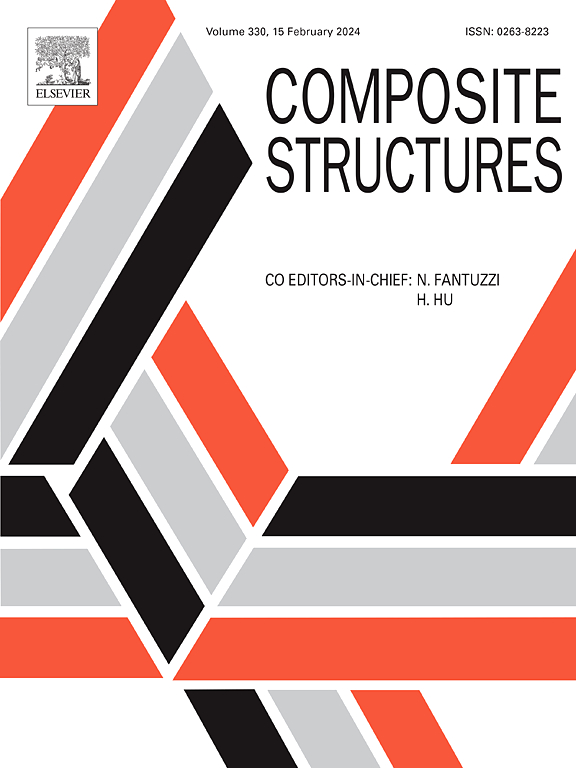Electromechanical coupling Voronoi cell finite element method for simulating interface debonding in piezoelectric particulate composites
IF 6.3
2区 材料科学
Q1 MATERIALS SCIENCE, COMPOSITES
引用次数: 0
Abstract
This study develops an electromechanical coupling Voronoi Cell Finite Element Method (VCFEM) for analyzing perfect bonding and debonding interfaces in piezoelectric particulate composites. Homogenization theory fails to accurately capture stress concentrations in composites with large-scale random particle distributions, while the traditional finite element method suffers from excessive computational demands due to mesh density requirements. The proposed VCFEM effectively addresses these issues. This study establishes electromechanical coupling Voronoi element models for inclusions. Meanwhile, based on the Voronoi cell finite element method, a modified functional is proposed that reflects the continuity conditions at the bonding interface and the generalized traction being zero at the debonding interface. In each element, stress and electric displacement fields are independently defined in matrix and inclusion subdomains, while displacement and electric potential fields are prescribed on external boundaries and matrix-inclusion interfaces. The VCFEM enables concurrent modeling of mechanical and electric field concentrations and progressive interface debonding within individual Voronoi cells. Several numerical examples are used to validate the accuracy and efficiency of the proposed method, and.
they further simulate the debonding evolution in piezoelectric composites under electromechanical loading.
机电耦合Voronoi单元有限元法模拟压电颗粒复合材料界面剥离
本文提出了一种机电耦合Voronoi单元有限元法(VCFEM),用于分析压电颗粒复合材料的完美粘结界面和脱粘界面。均匀化理论无法准确捕捉大尺度随机颗粒分布的复合材料的应力集中,而传统的有限元方法由于网格密度要求,计算量过大。拟议的VCFEM有效地解决了这些问题。建立了包裹体的机电耦合Voronoi单元模型。同时,基于Voronoi单元有限元法,提出了反映粘接界面连续条件和脱粘界面广义牵引力为零的修正泛函。在每个单元中,应力场和电位移场分别在矩阵和包体子域中定义,位移场和电位场分别在外部边界和矩阵-包体界面上定义。VCFEM可以同时模拟单个Voronoi细胞内的机械和电场浓度以及渐进的界面脱粘。算例验证了所提方法的准确性和有效性。他们进一步模拟了压电复合材料在机电载荷下的脱粘演化过程。
本文章由计算机程序翻译,如有差异,请以英文原文为准。
求助全文
约1分钟内获得全文
求助全文
来源期刊

Composite Structures
工程技术-材料科学:复合
CiteScore
12.00
自引率
12.70%
发文量
1246
审稿时长
78 days
期刊介绍:
The past few decades have seen outstanding advances in the use of composite materials in structural applications. There can be little doubt that, within engineering circles, composites have revolutionised traditional design concepts and made possible an unparalleled range of new and exciting possibilities as viable materials for construction. Composite Structures, an International Journal, disseminates knowledge between users, manufacturers, designers and researchers involved in structures or structural components manufactured using composite materials.
The journal publishes papers which contribute to knowledge in the use of composite materials in engineering structures. Papers deal with design, research and development studies, experimental investigations, theoretical analysis and fabrication techniques relevant to the application of composites in load-bearing components for assemblies, ranging from individual components such as plates and shells to complete composite structures.
 求助内容:
求助内容: 应助结果提醒方式:
应助结果提醒方式:


